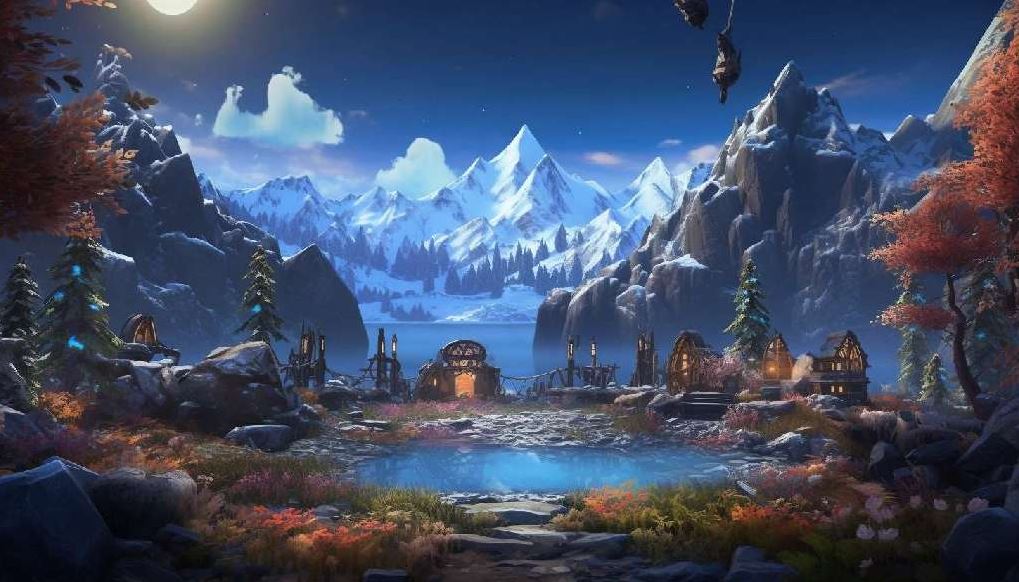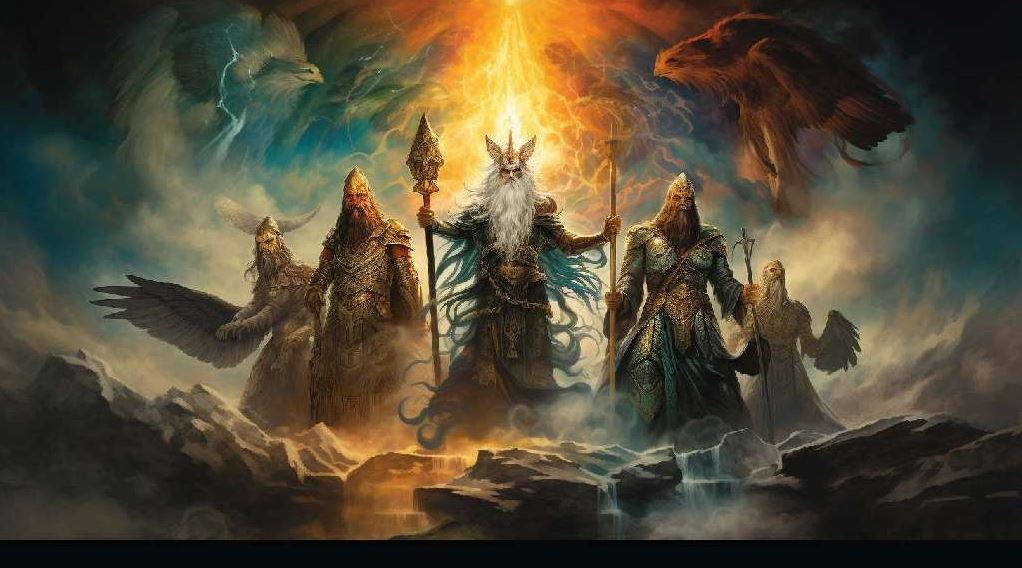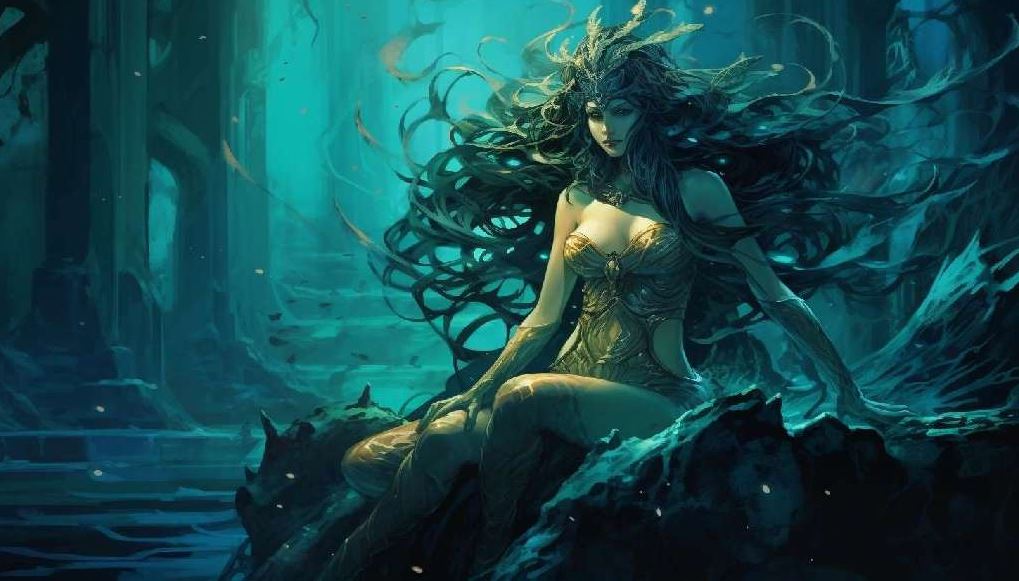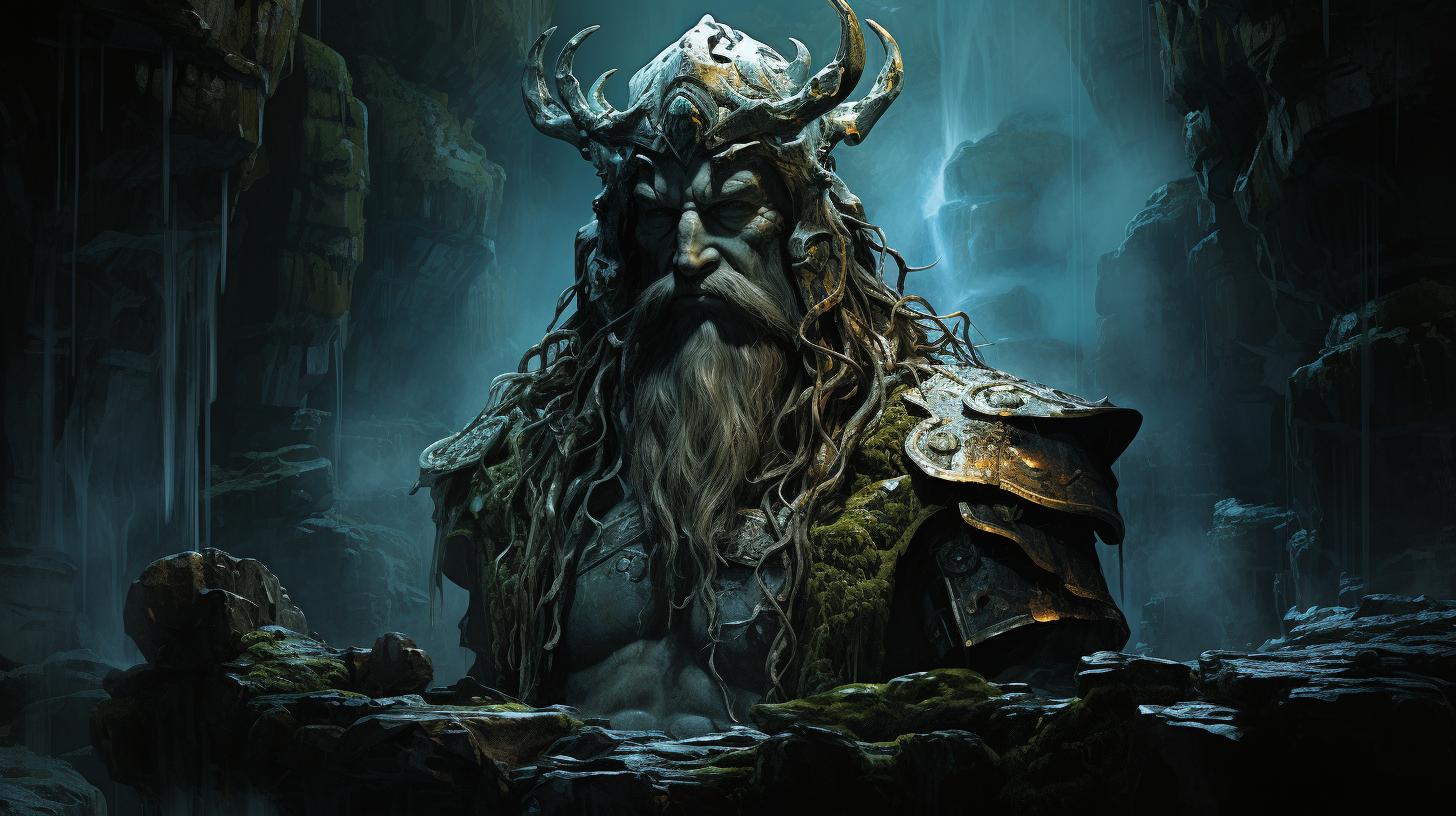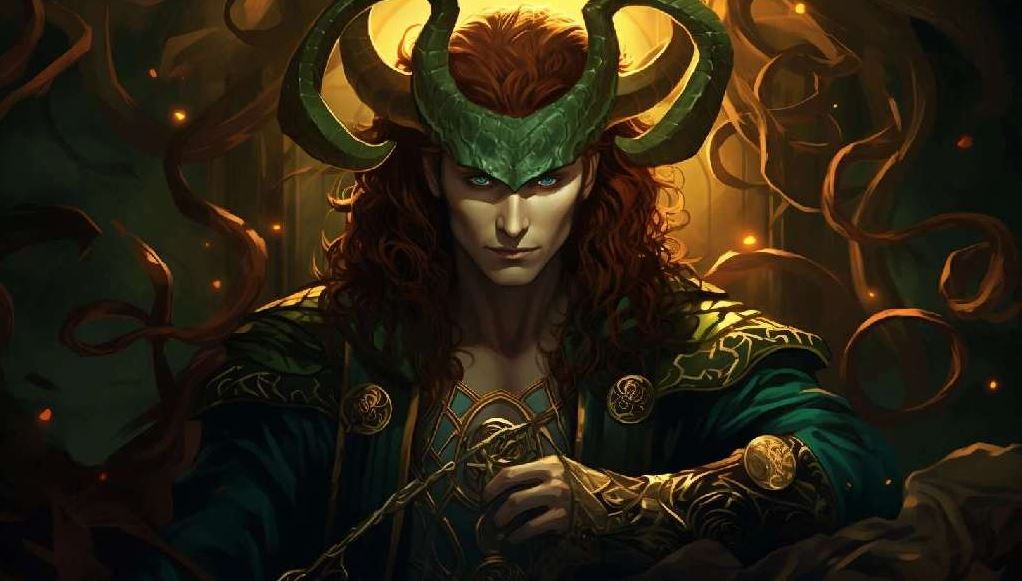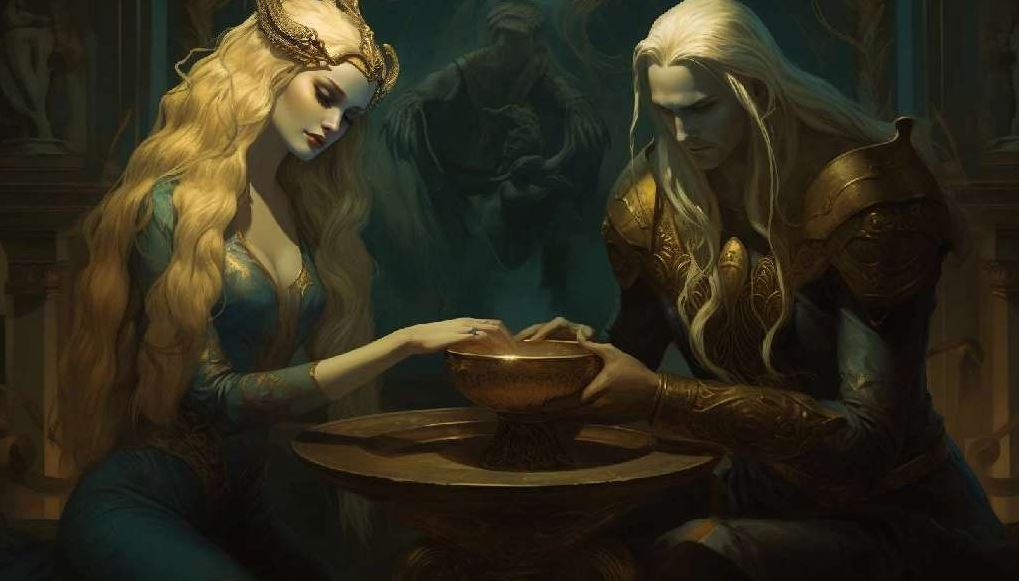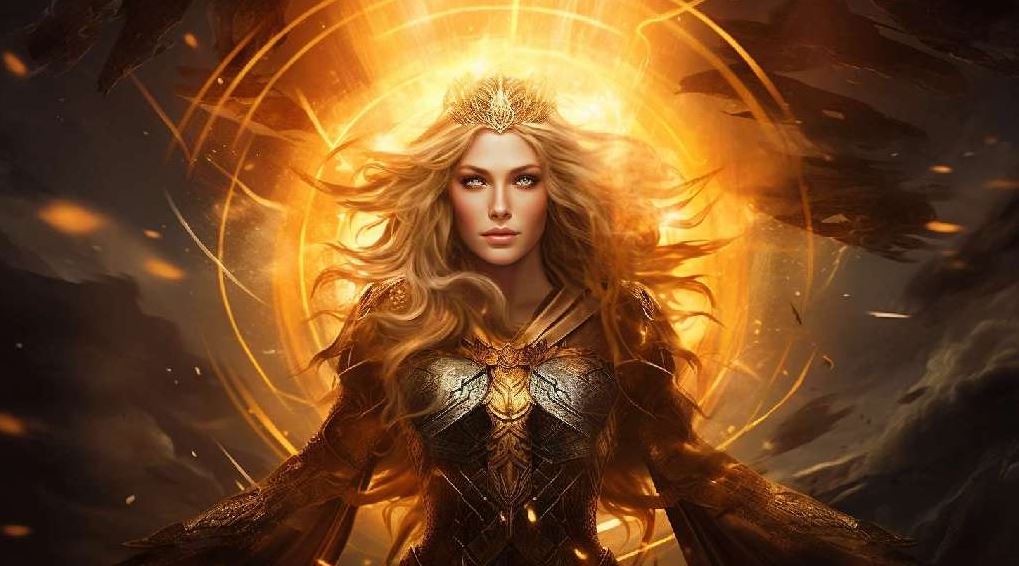Norse Goddess Jord: Exploring the Earthly Power and Divine Heritage

Jörð, the Norse goddess of the earth, holds a significant role in Norse mythology. She is known as the mother of Thor, the mighty god of thunder, and has connections with the revered god Odin.
Also referred to as an earth goddess, Jörð embodies the power and essence of the earth itself. Throughout various Norse mythological sources, such as the Gesta Danorum, Poetic Edda, and Prose Edda, her presence and importance are highlighted.
Academic interpretations speculate on her status as a goddess of the Æsir or a giantess, creating intriguing discussions. Linguistic connections and etymology further contribute to our understanding of Jörð’s mythical significance.
Who is Jord?
Jord, a prominent figure in Norse mythology, embodies both the mother of Thor and the personification of the earth. This section delves into her origin, meaning behind her name, her role as the mother of Thor, and her significance as an earth goddess.
Origin and Meaning of the Name ‘Jord’
‘Jord’ derives from the Old Norse term ‘jǫrð’ which translates to ‘earth’ or ‘ground’. Its linguistic roots can be traced back to the Proto-Germanic *erþō-, a term also associated with ‘earth’ and ‘soil’.
Additionally, it may share connections with the Ancient Greek word ‘éra’. This section explores the etymology and significance of Jord’s name.
Jörð in Norse Mythology: Mother of Thor
Jörð plays a vital role as the mother of Thor, the mighty thunder god in Norse mythology. The section explores various mythological sources, such as the Poetic Edda, Prose Edda, and Gesta Danorum, that mention her relationship to Thor and her importance in the Norse pantheon.
Jörð as an Earth Goddess
Beyond her role as Thor‘s mother, Jörð embodies the concept and power of the earth itself. She is revered as an earth goddess, symbolizing the fertility, stability, and interconnectedness of the natural world.
This section further delves into Jörð’s divine attributes and her representation as an earthly deity.
Jörð in Norse Mythological Sources
Jörð, the ancient Norse goddess of the earth, is featured prominently in various mythological sources, providing valuable insights into her significance within Norse cosmology. Her presence can be observed in works such as the Gesta Danorum, the Poetic Edda, and the Prose Edda.
Jörð in the Gesta Danorum
One notable mention of Jörð appears in Saxo Grammaticus’ Gesta Danorum. Referred to as ‘Iuritha,’ she is depicted as a key character, shedding light on her connection to other mythological figures.
Jörð in the Poetic Edda
The Poetic Edda, a collection of Old Norse poems, also references Jörð. Within the poems Völuspá and Lokasenna, Jörð’s role as Thor‘s mother, under the names Hlóðyn and Fjǫrgyn, respectively, is highlighted.
These verses provide insight into her maternal lineage and divine associations.
Jörð in the Prose Edda
In the Prose Edda, Jörð’s presence can be found in the books Gylfaginning and Skáldskaparmál. Gylfaginning portrays her as the mother of Thor and a notable sexual partner of Odin, further emphasizing her relevance within the pantheon.
Additionally, Skáldskaparmál features numerous mentions of Jörð, incorporating quotations from skaldic poetry that contribute to our understanding of her character.
The extensive references to Jörð in these mythological sources allow for a comprehensive exploration of her role, relationships, and symbolism within Norse mythology, shedding light on her complex and diverse nature.
Jörð and Her Relationships
Jörð, the Norse goddess of the earth, shares a complex connection with Odin, the Allfather. Their relationship goes beyond mere acquaintanceship, as Jörð is noted as one of Odin’s sexual partners.
This connection signifies a deeper intertwining of their powers and roles within Norse mythology. However, interpretations differ regarding Jörð’s identity as a giantess or goddess. Views range from considering her a member of the Æsir, the Norse gods, to recognizing her as a powerful giantess with close ties to the divine realm.
It is within this intricate balance that Jörð’s character carries multiple dimensions.
Jörð and Odin: A Complex Connection
Jörð’s involvement with Odin extends beyond mere romantic liaisons. Their relationship encompasses strategic alliances and shared goals, possibly highlighting Jörð’s influence on Odin’s actions within the larger mythological context. Although the specifics of their connection remain elusive, the significance of Jörð’s partnership with Odin cannot be understated.
Jörð as a Giantess or Goddess?
Jörð’s divine nature is a subject of debate among scholars. Some argue that Jörð is a goddess belonging to the Æsir, while others propose she is a powerful giantess. These contrasting interpretations shed light on the fluidity and complexity of Jörð’s character, blurring the boundaries between the divine and the giant realms.
The Family Relationships of Jörð: Nótt, Dagr, and Dellingr
Within Norse mythology, Jörð’s familial connections intertwine with the cosmic order. She is considered the mother of Thor, also known as Jarðar burr, and her role as a mother figure highlights her importance and influence within the pantheon.
Furthermore, her relationship with Nótt, Dagr, and Dellingr, the personifications of night, day, and dawn, adds depth to Jörð’s position in the mythological tapestry, shaping the world as we know it.
Academic Interpretations and Parallels
Academic scholars have delved into various interpretations and parallels of Jörð, shedding light on her significance within Norse mythology and her connections to other deities.
Jörð as a Goddess of the Æsir
One prevailing viewpoint asserts that Jörð is indeed a goddess of the Æsir, despite some references labeling her as a giantess. Her role as the mother of Thor, one of the most important gods in the Norse pantheon, solidifies her position among the divine Æsir.
Comparisons with Vedic Deity Indra
Curiously, scholars have drawn comparisons between Jörð and the Vedic deity Indra. Both gods share a special relationship with the earth, emphasizing their roles as protectors and wielders of thunder and lightning.
These parallels illuminate potential Indo-European connections and shared mythological themes.
Controversies and Scholars’ Perspectives
Nevertheless, debates persist regarding Jörð’s true nature and characteristics. Some propose that she was originally a giantess, while others argue that her relationship with Odin mirrors his strategic alliances with giantesses.
Additionally, conflicting manuscript versions of the Prose Edda have led to controversies surrounding Jörð’s family relationships. Scholars continue to explore these complexities, seeking to unravel the intricacies surrounding Jörð and her place within Norse mythology.
Jörð in Skaldic Poetry
In the realm of Skaldic poetry, Jörð takes on a significant role as a poetic term to refer to the earth. Skaldic poets often used her name to invoke the power and essence of the earth, emphasizing its importance and connection to the Norse pantheon.
Let’s delve into the poetic references and verses that mention Jörð:
Jörð as a Poetic Term for ‘Earth’
In the rich tapestry of Skaldic poetry, Jörð is frequently employed as a poetic term, rendering vivid imagery and symbolism of the earth. The poets skillfully utilize her name to evoke the ancient and primordial nature of the land, its fertility, and its integral role in the Norse cosmology.
Her connection to Thor as the earth’s son further magnifies her significance.
Skaldic Verses Mentioning Jörð
Within the verses of Skaldic poetry, Jörð finds herself woven into the intricate narratives and praises of gods and heroes. The poets pay homage to her in their compositions, praising her power, her nurturing qualities, and her divine status.
From her role as Thor‘s mother to her association with Odin, the verses bring forth Jörð’s essence as an essential element of the Norse mythological tapestry.
Overall, Skaldic poetry breathes life into Jörð, representing her as a profound embodiment of the earth and showcasing her influence within the Norse pantheon.
Alternative Names for Jörð
The Norse goddess Jörð is known by various alternative names in Norse mythology, each providing a different perspective on her divine power and connection to the earth.
Fjörgyn: Another Name for Jörð
Fjörgyn is considered another name for Jörð, emphasizing her role as an earth goddess. As the mother of Thor, Fjörgyn represents the nurturing and fertile aspects of the earth. Her association with Thor further highlights her importance in the pantheon of Norse deities.
The name Fjörgyn is often used as a poetic synonym for ‘earth’, underscoring Jörð’s embodiment of the natural world.
Hlóðyn: The Uncertain Connection
In the ancient Norse poem Völuspá, the goddess Hlóðyn is mentioned as another possible name for Jörð. However, the exact connection between Jörð and Hlóðyn remains uncertain. Scholars debate whether Hlóðyn is a separate entity or simply an epithet for Jörð.
The etymology of Hlóðyn adds to the ambiguity, as its origins and meaning remain unclear. Further research is needed to fully understand the significance of Hlóðyn and her relationship to Jörð.
Key Points
- • Jörð is known by alternative names in Norse mythology.
- • Fjörgyn emphasizes Jörð’s role as an earth goddess and her connection to Thor.
- • Hlóðyn’s relationship to Jörð is uncertain and subject to scholarly debate.
Various Aspects of Jörð’s Role
As a prominent figure in Norse mythology, Jörð encompasses several key aspects that contribute to her mythological importance and symbolism.
Jörð as Mother of Thor: Mythological Importance
Jörð’s role as the mother of the mighty thunder god Thor holds great significance in Norse mythology. Thor, known for his strength and protection, owes his divine lineage to Jörð.
This maternal connection establishes Jörð as a crucial figure in the mythology and highlights her role in shaping the destiny of gods and mortals alike.
Jörð’s Position Among the Ásynjur
Among the pantheon of Norse goddesses, Jörð holds her place as one of the ásynjur. This elevated status signifies her association with the divine and her participation in the affairs of the gods.
As one of the revered ásynjur, Jörð’s influence and power extend beyond her role as an earth goddess, positioning her among the esteemed goddesses of Norse mythology.
Symbolism and Representation of Jörð
Jörð’s embodiment of the earth grants her symbolic significance in Norse mythology. As the personification of the earth, she symbolizes fertility, stability, and the interconnectedness of all living beings. Jörð’s representation serves as a reminder of the fundamental relationship between the natural world and the divine, highlighting the importance of respect and harmony with the earth.
In summary, Jörð’s multifaceted role as the mother of Thor, her esteemed position among the ásynjur, and her profound symbolism as the earth goddess contribute to her significance and enduring presence in Norse mythology.
Linguistic Connections and Etymology
In exploring the linguistic connections and etymology of the name ‘Jörð’, we can uncover fascinating insights into the origins and meaning of this Norse goddess.
Origin and Meaning of the Name ‘Jörð’
The name ‘Jörð’ derives from Old Norse and serves as a personification of the earth. Rooted in Proto-Germanic, the term *erþō- meaning ‘earth, soil, ground’ formed the basis for ‘Jörð’. This connection is evident in related words across Germanic languages, such as Gothic ‘airþa’, Old English ‘eorþ,’ Old Saxon ‘ertha,’ and Old High German ‘erda’.
Relationship with Proto-Germanic Term for ‘Earth’
Jörð’s name reflects her role as an earth goddess, encompassing the central theme of fertility, vitality, and grounding. The Proto-Germanic term *erwa or erwōn-, meaning ‘sand, soil,’ is likely cognate with Old Norse’s ‘jǫrfi’ and Old High German’s ‘ero.’
.
These connections deepen our understanding of Jörð’s divine essence as an embodiment of the earthly realm.
Possible Connections to Ancient Greek and Old High German Words
Furthermore, there are possible linguistic linkages between ‘Jörð’ and other ancient languages. The Greek ‘éra,’ meaning ‘earth,’ shares similarities with the Old Norse term. Similarly, the Old High German word ‘erda’ aligns with the Proto-Germanic root and offers potential connections to Jörð’s divine significance.
By delving into the linguistic connections and etymology of ‘Jörð,’ we gain a deeper understanding of this Norse goddess’s symbolic power and her close association with the earth…..













